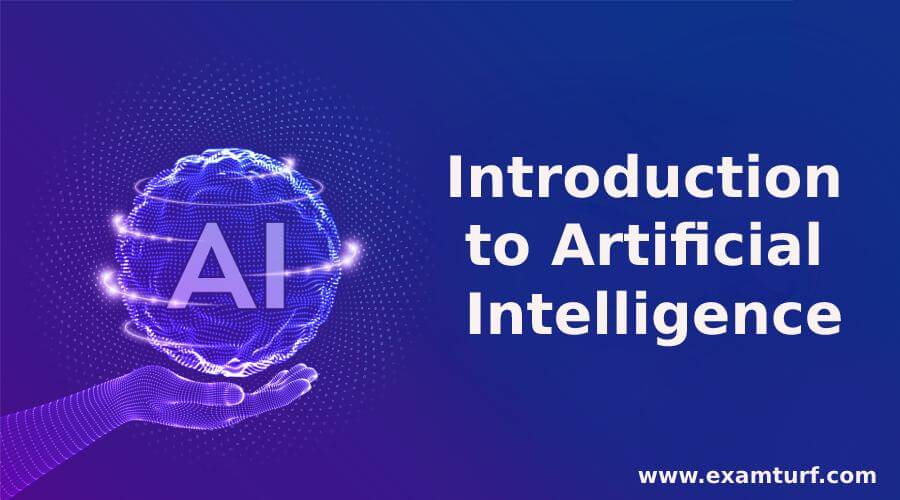
Introduction To Artificial Intelligence
According to Statistic, Professor John McCarthy was the first person who introduced the term ‘Artificial Intelligence’ in 1956. Earlier, Artificial Intelligence was limited to only films, but now its use has become common in every field. In today’s world, technology has advanced so as in Artificial Intelligence. A few years back, even a small task has to perform by a human, but with the introduction of Artificial Intelligence Automobile industry has started using less human power. Artificial Intelligence can perform various tasks like driving automobiles, can adapt according to an environment, to play games, it helps in providing virtual assistance. According to data, it has projected that 97.9 billion U.S. dollars revenue will be generated from Artificial Intelligence by 2023.
What Is Artificial Intelligence?
Artificial Intelligence is a branch of Computer science. Machines are programmed and demonstrate different activities through their intelligence, or we can say that it is a study of a human brain: an ability to think, work, their decision power, and solving problems.
1. Various tools are used in artificial intelligence
Below are the tools of artificial intelligence:
- Different versions of search and mathematical optimization
- Probability
- Economics
- Artificial neural networks
- Statistics
2. Intelligence can be defined as the ability to think, understand, and learn
It is composed of:
- Perception
- Problem solving
- Linguistic intelligence
- Learning
- Reasoning
3. Different applications of artificial intelligence
Below are the applications:
- Gaming
- Vision systems
- Automotive
- Natural language processing
- Speech recognition
- Healthcare, etc.
4. Objectives of artificial intelligence
Below are the objectives:
- Reasoning
- Planning
- Ability to move and manipulate objects
- Natural language processing
- Knowledge representation
- Learning
- Realization
5. Approaches of artificial intelligence
Below are the approaches:
- Statistical methods
- Traditional coding
- Computational intelligence
6. Different uses of artificial intelligence
Approximately 31.7 billion U.S. dollars have been invested in Artificial Intelligence. Companies that are into software business and information technology service providers are investing an enormous amount in the Artificial Intelligence field.
Where Artificial Intelligence is Used?
Here are some sectors where Artificial Intelligence is being used:
- Healthcare: These days most people are spending their time scrolling on social media and deteriorating health. If we look at the data, half of the population compromises on their health. With an increase in population and pollution, demand for Artificial Intelligence enabled equipment for hospitals has increased. It is a one-time investment. It reduces the time, cost, enable workflow and helps the doctors to free up their schedules. Artificial Intelligence enabled equipment helps pathologists in analyzing tissues.
- Business: In this digital world, online businesses are dependent on Artificial Intelligence. For those who operate their business online, they need to have real-time data. For instance, when you visit any website, you must have seen a chat window. And if you ask any query in the chatbot, they respond it immediately. The chatbot works on Artificial Intelligence.
- Education: Jiffy can automatically check multiple-choice questions, fill-in-the-blank questions, and automated grading of candidates can be done.
Other fields where artificial intelligence is used:
- Social media
- Tourism
- Big data research
- Aviation
- Self-driving automobiles
- Financial trading
- Online shopping
- Mobile use
Types of Artificial Intelligence
Below are the different types of artificial intelligence:
- Reactive machines: These types of Artificial Intelligence have limited capability and the oldest forms of Artificial Intelligence systems. It doesn’t have memory-based functionality and cannot use past data or experiences to take present actions. IBM’s Deep Blue is the most popular example of a reactive artificial intelligence machine.
- Limited memory: Limited memory machines can use past experiences to make decisions. Nearly, all present-day Artificial Intelligence system comes under this category of Artificial Intelligence. An image recognition Artificial Intelligence is the best example in this category.
- Theory of mind: For now, this type of Artificial Intelligence is a concept or work in progress. A theory of mind Artificial Intelligence will be able to under human emotions better.
- Self-aware: Self-aware is the final stage of Artificial Intelligence, and it is hypothetically present.
Other types of artificial intelligence are:
- Artificial Narrow Intelligence (ANI)
- Artificial General Intelligence (AGI)
- Artificial Superintelligence (ASI)
How AI Works?
- Placing Artificial Intelligence on an island with robots and self-driving cars, this approach fails because it didn’t recognize a major practical application of Artificial Intelligence.
- While going through the data created by humans, Artificial Intelligence systems provide intelligent searches.
- They can interpret both images and texts to find patterns in complex data, and then they act accordingly.
Conclusion
In recent years many developments have been done in the Artificial Intelligence field. As it goes, artificial intelligence will perform better in terms of its decision-making.
Recommended Articles
This is a guide to Introduction to Artificial Intelligence. Here we discuss what is artificial intelligence? where it is used? types and how AI works? You can also go through our other suggested articles to learn more –
- What is Artificial Intelligence?
- Benefits of Artificial Intelligence
- Future of Artificial Intelligence
- Career in Artificial Intelligence
Are you preparing for the entrance exam ?
Join our Artificial Intelligence test series to get more practice in your preparation
View More